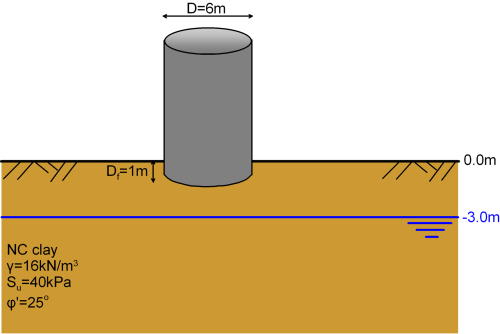5.10 Additional problems
5.10.1.
Determine the minimum required thickness of the improvement layer for the problem presented in Example 5.5, while using the approximate methodology presented in Section 5.5.2 instead of PLAXIS.
Answer:
z ≈ 0.60 m
5.10.2.
A silo is going to be founded on a layer of saturated, normally consolidated clay, featuring the characteristic shear strength properties shown in the figure below, which were determined from laboratory triaxial tests. The foundation will be embedded at a depth Df = 1 m. Groundwater table is found at -3.0 m below the ground surface.
Estimate the vertical load that can be carried by the silo’s foundation at the Ultimate Limit State according to AS 5100.3, assuming only dead loads. Consider both short-term and long-term loading conditions.
Should the groundwater table rise to e.g. -2.0 m, what will be the effect on a) the short-term, and b) the long-term bearing capacity of the silo?
Note: Do not apply any reduction factors on the shear strength parameters of the clay (Eqs. 5.6 and 5.7) to account for the possibility of local shear failure.

Answer:
Short-term vertical load G=2785 kN
Long-term vertical load G=3649 kN

